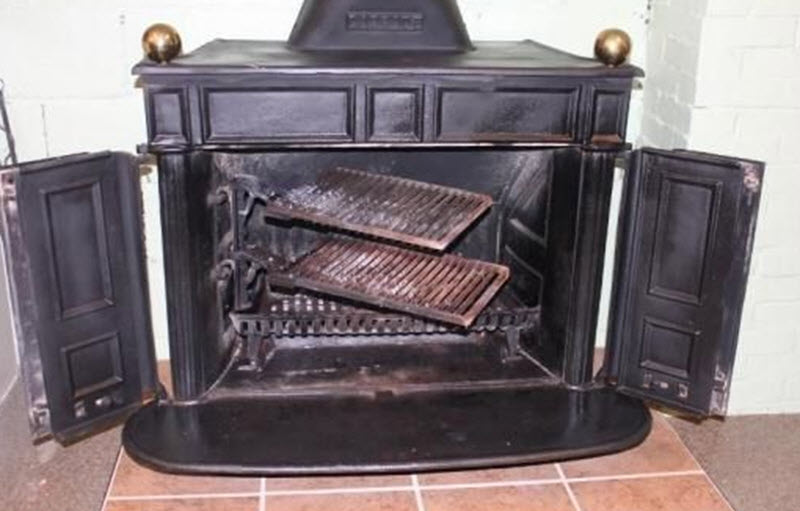The Franklin stove stands as a testament to innovation, attracting renewed interest thanks to Joyce Chaplin’s exploration of Benjamin Franklin’s pivotal invention in her latest book. This remarkable stove not only revolutionized heating practices in the 18th century but also contributed significantly to the history of atmospheric phenomena as Franklin applied scientific principles to improve indoor comfort. Recognized as a crucial piece of climate adaptation technology, the Franklin stove was designed to consume less wood while providing greater warmth, thus influencing both domestic life and environmental awareness during times of severe cold. Chaplin’s work invites readers to appreciate the intricate interplay between Franklin’s inventions and the pressing environmental challenges of his era, paving the way for discussions about technology’s role in mitigating climate issues. As we delve into the story behind this ingenious device, we uncover deeper insights into how inventions like the Franklin stove continue to shape our understanding of energy use and atmospheric science today.
Known for its efficiency and innovative design, the Franklin stove illustrates the ingenuity of 18th-century American technology. This early form of a heat-generating apparatus, crafted by the celebrated inventor Benjamin Franklin, marked a significant evolution in domestic heating solutions. Often categorized as a pivotal development in energy conservation, the Franklin stove transformed the dynamics of comfort within homes during harsh winters. By exploring alternative heating methods, this invention not only elevated the standard of living but also mirrored the growing awareness of environmental sustainability. Chaplin’s analysis sheds light on Franklin’s lesser-discussed contributions, further enriching our understanding of his legacy in the context of energy innovation and climate resilience.
The Revolutionary Design of the Franklin Stove
The Franklin stove, invented by Benjamin Franklin in the harsh winter of 1740 to 1741, represents a significant departure from traditional heating methods used by early American colonists. This innovative design utilized a series of iron plates that allowed for more efficient heating of rooms. Unlike standard fireplaces which wasted much of the heat, the Franklin stove was engineered to maximize warmth while minimizing wood consumption, a crucial factor during a time of resource scarcity. As settlers faced the brutal cold and difficulties accessing firewood, Franklin’s invention provided not just comfort, but a means to adapt to the climate.
Over the decades, the Franklin stove evolved through several iterations, transitioning from wood to coal as a fuel source. This change not only increased efficiency but also reflected broader societal shifts toward industrialization. By focusing on environmental adaptability, Franklin’s stove became an early example of climate adaptation technology, showcasing how scientific thinking and innovation can interlace to produce practical solutions for everyday issues. Joyce Chaplin’s book sheds light on how this invention managed to spark new conversations regarding the interconnectedness of technology and environmental stewardship.
Understanding Atmospheric Phenomena Through Franklin’s Innovations
Franklin’s curiosity didn’t just stop at developing more efficient heating methods; he extended his inquiries to the broader atmospheric phenomena impacting colonial life. In fact, the principles that underpinned the efficiency of the Franklin stove were directly tied to his understanding of convection and how air interacts with temperature changes. He published writings that laid down foundational ideas about how warm air rises and cool air descends, a concept he cleverly related back to both indoor comfort and outdoor weather systems.
In her analysis, Joyce Chaplin emphasizes how Franklin’s lifelong dedication to studying atmospheric currents paved the way for early meteorological thought. The same concept of air movement that he applied to creating a functional heating system in homes also figured into his observations of the Gulf Stream and the workings of storm systems along the Atlantic. This dual application of his discoveries highlights not only an inventive mind but a holistic understanding of the interrelations in nature, ultimately influencing both science and the comfort of daily life.
Franklin’s Ethics: Emissions and Environmental Awareness
An often overlooked aspect of Franklin’s intellectual contributions is his acute awareness of the environmental impacts of smoke emissions. Despite being technologically advanced for his time, Franklin was careful to consider how his innovations might affect air quality. His later iterations of the stove featured designs aimed at re-burning smoke, which he understood to be an unburned fuel source that contributed unnecessary pollution. By addressing emissions, Franklin set a precedent for future inventions to be evaluated not just on efficiency but also on ecological impact.
Joyce Chaplin includes this critical analysis in her exploration of Franklin’s work, showcasing how his aspirations were not only scientific but inherently ethical. The aim to reduce smoke emissions reflected a forward-thinking attitude toward industrial practices that would become pivotal in the environmental movement much later. Chaplin’s book illustrates how Franklin’s early concerns about air pollution resonate today, emphasizing the idea that technological advancement must go hand-in-hand with environmental responsibility.
Joyce Chaplin’s Insights on Franklin’s Influence
In her recent work, Joyce Chaplin brings forth the complex, multifaceted character of Benjamin Franklin beyond the popular image of ‘Poor Richard.’ By focusing on his lesser-known inventions, particularly the Franklin stove, she opens up new discussions about innovation in the context of societal challenges, like climate adaptation. Her meticulous research reveals how Franklin’s scientific pursuits intersect with historical events, such as the harsh winters of the Little Ice Age, emphasizing his role as a visionary who understood the importance of technology in improving human life.
Chaplin’s book provocatively connects Franklin’s 18th-century insights to contemporary issues surrounding climate change and technology. By presenting Franklin’s innovative spirit as a catalyst for future technological advancements, she underscores the need for a deeper comprehension of how we can draw lessons from history to tackle current environmental challenges. As we face our own climate crises, the examination of Franklin’s principles can inspire modern inventors and policymakers to adopt a more holistic approach to innovation.
The Cultural Significance of the Franklin Stove
The Franklin stove is more than just a technology; it stands as a cultural artifact reflecting the Enlightenment ideals of the 18th century. As Franklin became a symbol of American ingenuity, his stove also became a tangible representation of the era’s scientific aspirations and the belief in progress. This invention enabled more families to secure warmth during frigid winters while also engaging in sustainable practices. The cultural impact of the Franklin stove can thus be seen as a cornerstone of American domestic life, reshaping how individuals interacted with their environment.
Joyce Chaplin details how Franklin’s cookery of comfort and practicality through the stove symbolized a shift in societal values — one that emphasized efficiency and innovation. As households began to embrace this ingenious design, it also served to unite communities, as families gathered around the warmth it provided, especially during the trials of winter. Today, the ongoing legacy of the Franklin stove continues to highlight the interconnectedness of technology, culture, and environmental considerations in daily life.
Franklin’s Legacy in the Context of Climate Challenges
Franklin’s innovations have persisted as foundational ideas in the dialogue about climate change and energy use. His recognition that heating systems could be more efficient echoes in today’s discussions around sustainable practices and technologies. The transition from wood to coal within the stove’s design reflects a larger narrative regarding resource management that remains crucial as we face modern energy crises. By studying Franklin, contemporary inventors can glean insights about addressing today’s climate challenges while respecting the historical lessons of resource usage.
Chaplin’s narrative argues that Franklin embodies a pioneering spirit — one that welcomed technological advancement with cautious optimism. While he didn’t foresee the environmental crises we’ve marred, his thought process and emphasis on improvement serve as a model for modern solutions. The complexities surrounding climate solutions echo Franklin’s own reflections on the balance between innovation and ethical responsibility, aligning with a broader societal imperative to develop diverse strategies for climate adaptation.
The Franklin Stove: A Blueprint for Future Innovations
The Franklin stove serves as more than just a historical artifact; it embodies the spirit of innovation that can guide modern technological advancements. In a world increasingly facing climate instability, Franklin’s method of addressing comfort through efficient technology lays a framework for future generations of inventors and thinkers. His approach of prioritizing efficiency and environmental responsibility can inspire contemporary solutions that tackle pressing issues in energy consumption and sustainable living.
Chaplin highlights the importance of viewing the Franklin stove not merely as a novelty but as a blueprint for how innovation can emerge from necessity. In a similar vein, today’s inventors and entrepreneurs must look toward sustainable practices that foster both comfort and ecological awareness. The legacy of the Franklin stove exemplifies how thoughtful innovation can improve quality of life while addressing the environmental challenges that define our time.
Understanding Franklin through the Lens of Historical Context
Joyce Chaplin’s examination of Benjamin Franklin’s life and inventions cannot be fully appreciated without understanding the historical and social context of the 18th century. The competition for resources, such as firewood during the harsh winters, highlights the real-life implications of agricultural practices and settlement patterns evolving in colonial America. Chaplin dives into this historical backdrop, illustrating how Franklin’s inventions were not just scientific endeavors but responses to the pressing challenges faced by his contemporaries.
Through her detailed research, Chaplin connects Franklin’s story with larger global patterns affecting early American society. The developments of atmospheric sciences during this period were heavily intertwined with Franklin’s work, bridging the gap between natural phenomena and human innovation. This contextualization allows readers to grasp the profound influence of Franklin’s inventions, particularly the Franklin stove, in shaping America’s understanding of both the environment and technology.
Lessons Learned from the Franklin Stove for Today’s Sustainability Efforts
The impact of the Franklin stove extends into today’s discourse on sustainability and energy efficiency. As we navigate the complexities of climate change, Franklin’s principles of efficient fuel usage and the emphasis on reducing air pollution continue to resonate. Joyce Chaplin’s book encourages modern inventors to reflect on Franklin’s approach: consider the ecological implications of their technologies and strive for innovations that minimize environmental harm.
In today’s context, challenges like urban heat islands and energy scarcity require solutions reminiscent of Franklin’s adaptive mindset. By learning from the past, we can develop comprehensive solutions to modern challenges that incorporate the wisdom of historical figures like Franklin. His legacy encourages a collaborative approach to invention, where technology serves not only human comfort but also the health of the planet, echoing the necessity for a balanced, multi-faceted approach to sustainable innovation.
Frequently Asked Questions
What is the significance of the Franklin stove in Benjamin Franklin’s inventions?
The Franklin stove is a pivotal invention by Benjamin Franklin that illustrates his innovative approach to climate adaptation technology. Introduced during the harsh winter of 1740-1741, it was designed to improve heating efficiency while reducing wood consumption, showcasing Franklin’s scientific ingenuity.
How did the Franklin stove influence our understanding of atmospheric phenomena?
The Franklin stove contributed to a deeper understanding of atmospheric phenomena, as Franklin used its convection principles to explain how atmospheric conditions like the Gulf Stream work. His insights on indoor heating paralleled his scientific observations of outdoor air movement, merging technology with the study of the natural world.
In what ways did Joyce Chaplin’s book delve into the history of the Franklin stove?
Joyce Chaplin’s book, ‘The Franklin Stove: An Unintended American Revolution’, explores the historical context of the Franklin stove, detailing how Franklin developed this crucial climate adaptation technology amidst environmental challenges, furthering innovations in both comfort and scientific understanding.
What impact did the Franklin stove have on energy efficiency and emissions?
Benjamin Franklin designed the later versions of the Franklin stove to recirculate smoke for re-burning, thereby minimizing emissions and enhancing energy efficiency. This forward-thinking approach highlights Franklin’s concern for air quality and his innovative solutions to reduce pollution.
How does the Franklin stove reflect Benjamin Franklin’s connection to climate adaptation technology?
The Franklin stove is a prime example of Benjamin Franklin’s engagement with climate adaptation technology. By creating an efficient heating system to combat the extreme cold of the Little Ice Age, Franklin contributed to improving living conditions while addressing environmental challenges.
What did Joyce Chaplin reveal about the social implications of the Franklin stove?
Joyce Chaplin discusses in her book how the Franklin stove not only served a technological purpose but also reflects social issues of its time, such as the role of enslaved individuals in the iron industry that produced these stoves, highlighting a complex narrative in Franklin’s legacy.
| Key Points |
|---|
| Benjamin Franklin invented the Franklin stove during the harsh winter of 1740-41 to improve heating efficiency. It was designed to consume less wood and provide more warmth than traditional fireplaces. |
| The stove contributed to a better understanding of atmospheric phenomena by illustrating the principles of convection and indirectly mapping the Gulf Stream. |
| Chaplin’s book, “The Franklin Stove: An Unintended American Revolution,” explores Franklin’s lesser-known contributions to science and technology, especially how the stove emerged from environmental challenges. |
| Franklin’s later versions of the stove aimed to reduce smoke emissions by re-burning smoke before it exited the chimney, demonstrating an early awareness of air pollution. |
Summary
The Franklin stove represents a significant leap in heating technology developed by Benjamin Franklin. This invention not only transformed the way people in the colonies kept warm but also contributed to scientific advancements in understanding weather patterns and atmospheric science. Joyce Chaplin’s exploration of this lesser-known innovation reveals how Franklin tackled the challenges posed by the Little Ice Age and aimed to enhance comfort and efficiency through inventive solutions. The relevance of the Franklin stove to both historical and modern contexts underscores its status as a pivotal invention that reflects Franklin’s prophetic thinking about technology and climate adaptation.




